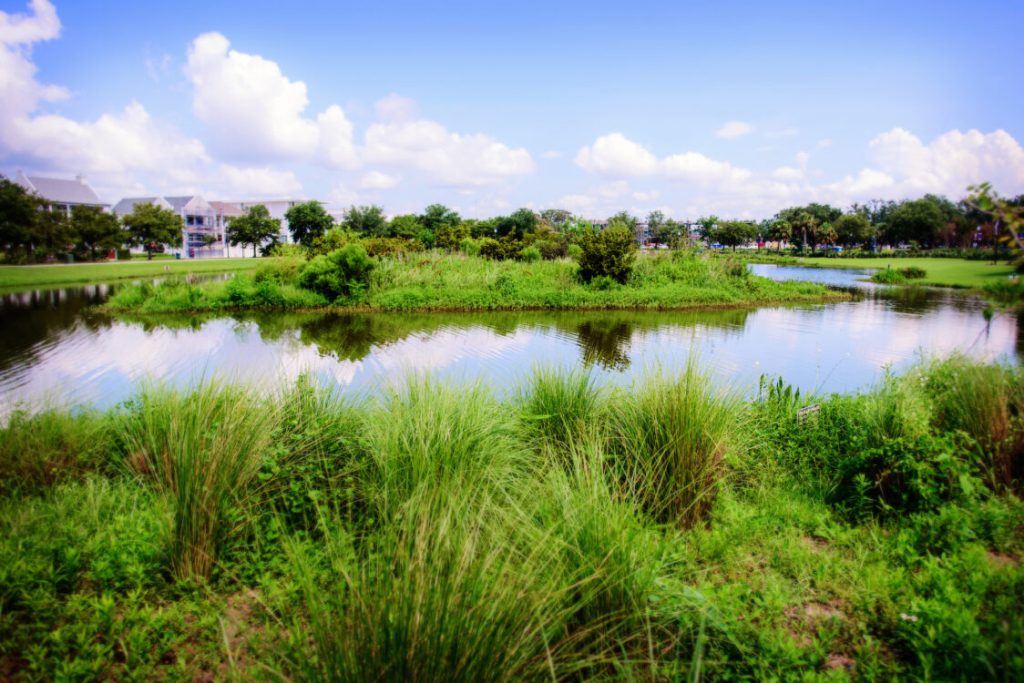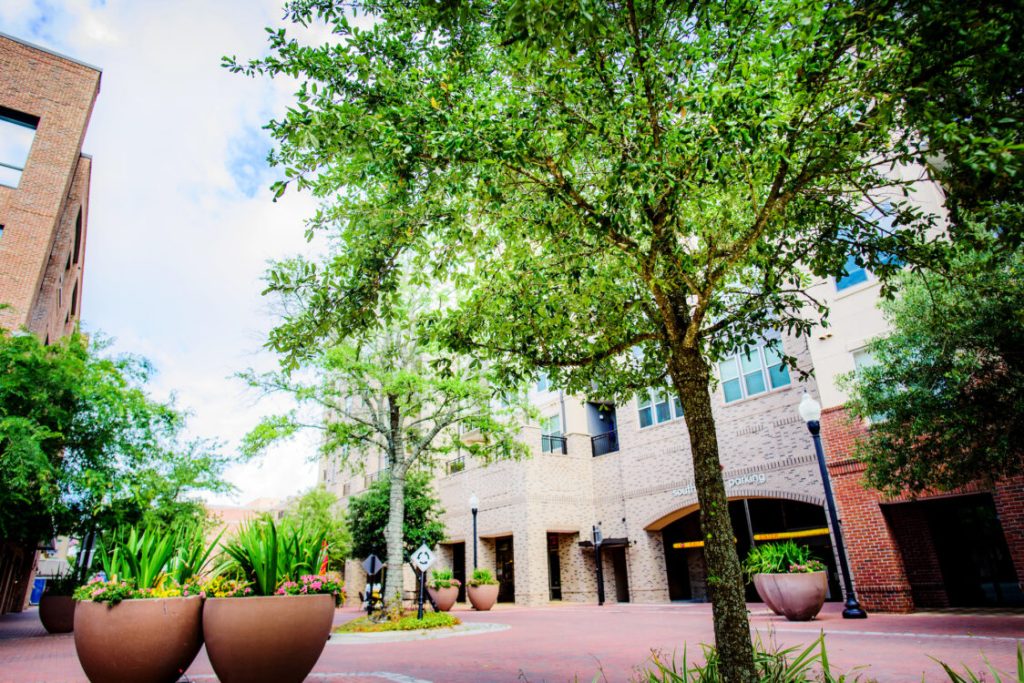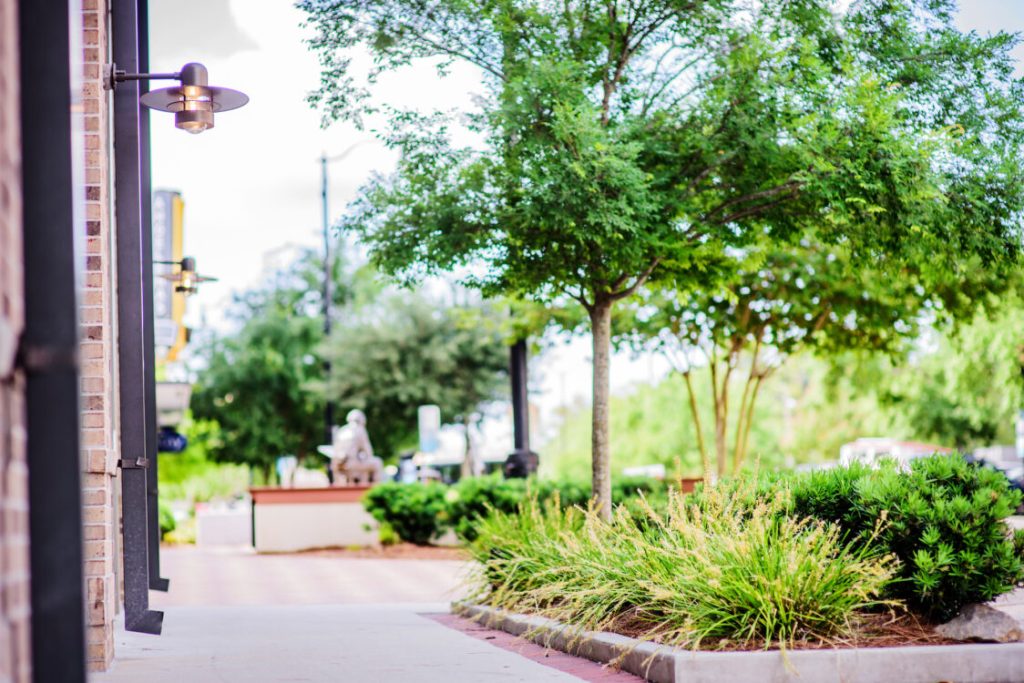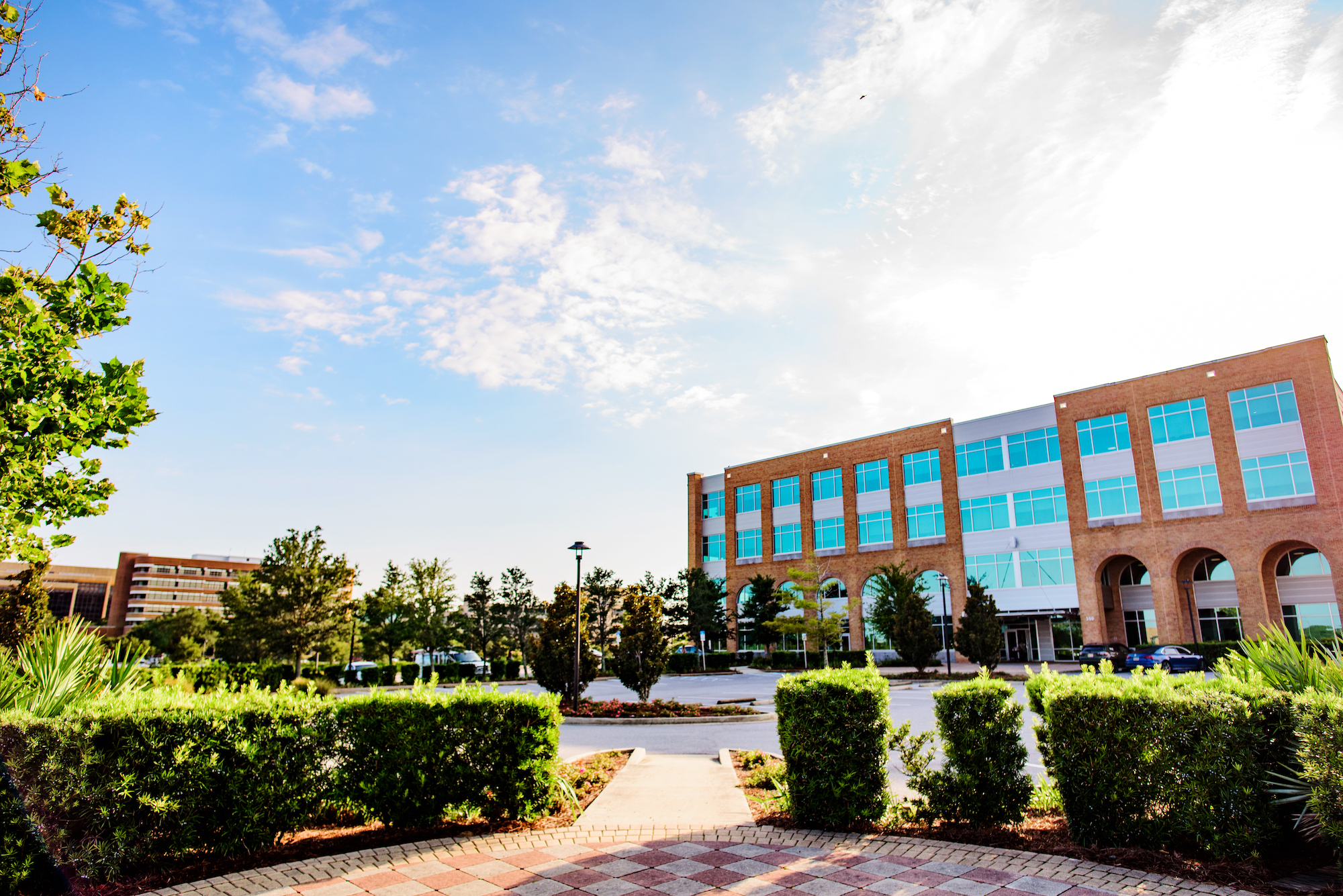Golfweek Features Jerry Pate Design and Teeth of the Dog - Read More
The warmth of the sun can be a source of great enjoyment, and it plays a critical role in the beautiful ecosystems of our planet. But too much heat can certainly be a bad thing—for people and plants alike. As landscape architects, we have the unique ability to help people avoid excessive heat while still enjoying nature. Designing with heat management in mind can also lower the energy consumption of a building and improve conditions for certain plants and wildlife. It pays to consider heat dangers! So, keep reading to explore our top tips for reducing heat in your landscape architecture.
Consider Adding Water Features

Last month, we discussed the benefits to incorporating a water feature into your commercial landscape architecture. Now, let’s focus on the ways it could help you reduce heat dangers.
Water has a high specific heat capacity, which means that it will absorb a lot of heat before it begins to get hot itself. In the context of landscape architecture, this makes it a great tool. Whether in the form of a pond or lake, or a small fountain, water can be used to regulate heat.
Larger bodies of water will absorb heat directly as the sun is creating it. Meanwhile, even a small fountain can assist, as the humidity and mist generated by proper water circulation will cool the surrounding air.
Protect and Produce Shade to Avoid Heat Dangers

Of course, arguably the best way to reduce heat is to create shade—or protect it where it naturally occurs. There are a few ways to approach this.
While making design decisions, try not to eliminate existing trees unless necessary to another landscaping element. If you do have to remove a large portion of trees, consider planting new ones in a part of your architecture that better accommodates them.
Aside from the tree factor, man-made structures can also offer ample shade. Features like pergolas and arbors serve both as an aesthetically pleasing component and a shady respite. If you need help deciding which structures might be best, we have a blog post that covers them all.
Be Selective About Hardscape

Hardscape is a helpful and necessary part of many people-friendly landscapes, and it can be chosen in a way that reduces heat! At Jerry Pate Design, we use hardscape carefully and functionally, while maximizing greenspace. This helps us to mitigate heat. It’s all about making the best choices. Denser concrete pavers, for example, better reflect heat to prevent absorption. Color also plays its role—lighter shades, like white, will reflect more and absorb less.
If heat is a major issue on your property, you could also swap some hardscape for landscape beds with beautiful flowers and mulch to eliminate some heat absorption.
Work With Nature

Our final tip goes hand in hand with a few of the others: work with nature, not against it! Of course, this can sometimes feel like a vague and aspirational piece of advice. So, what do we mean by it? Here are two examples of how your landscape architecture can work with nature to avoid heat dangers.
In our hometown of Pensacola, the natural summer breezes usually come from the south, off of the bay. Consider the cooling effect of designing a property—from buildings to landscape architecture—with that orientation in mind. Direct that breeze to your advantage, and you can significantly improve heat levels. This thinking also applies to sun exposure. Orient your site so that the people enjoying it will be hidden from hot summer sun angles.
Another way you can work with nature is to be thoughtful about seasonal shifts. Imagine you plant deciduous trees in a position that blocks your building from some of the sun in the summer. Then, in the winter, those same trees will shed their leaves, allowing the sun to heat your now-cooler structure. In this way, nature can be a partner in optimizing the building envelope.
When we devote time and attention to creating landscape architecture that supports heating and cooling needs, we do ourselves a favor and design in a more sustainable way. It’s a good thing for all involved.
To discuss how your landscape architecture could be optimized to reduce heat dangers, get in touch.

